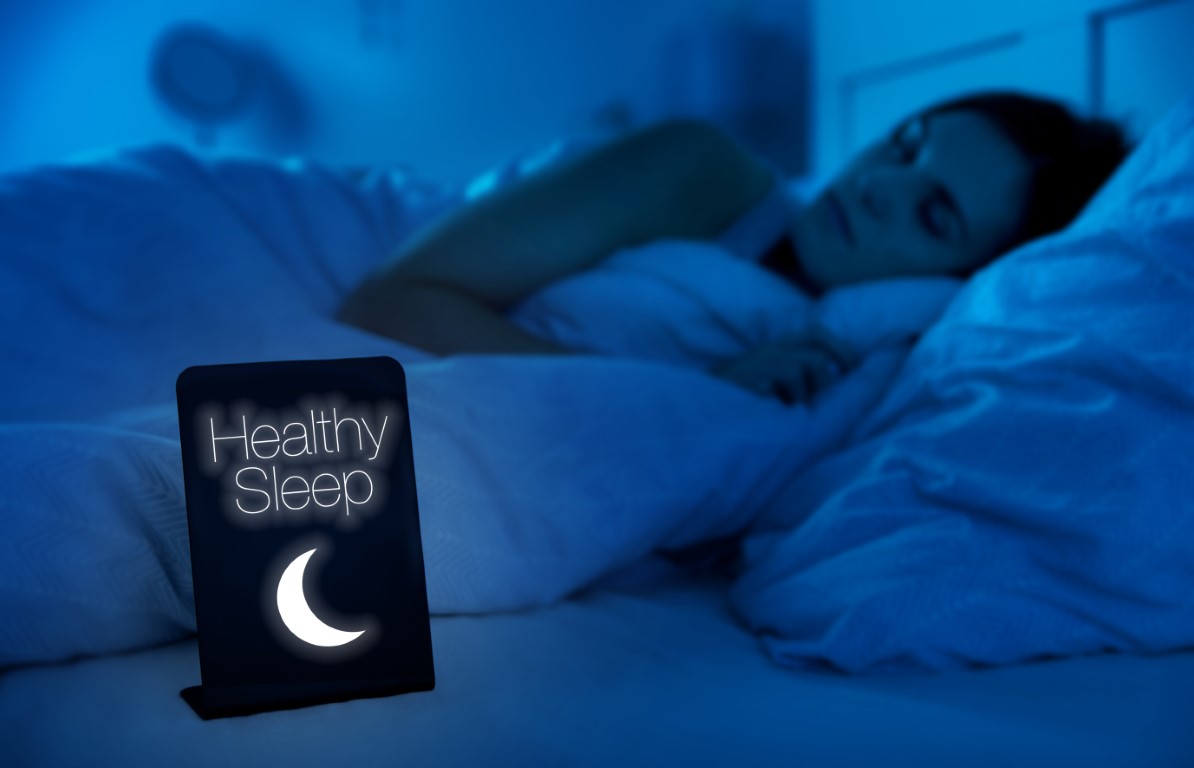If you’re noticing fatigue and sleepiness during the day, you could be having issues with sleep. And you’re not alone. The CDC has reported that over 47 million Americans suffer from sleep problems. If you’re looking for some ideas for improving your sleep health, read on!
The following suggestions are all options for developing good sleep hygiene and can help increase the chances of a good night’s sleep. In this article, we’ll be discussing some of the most popular methods for creating a more peaceful environment for you to fall asleep in. The following techniques include: establishing a bedtime routine, creating a sleep environment, diaphragmatic breathing, other-guided sleep recordings, body scan, and self-guided meditation. Armed with these techniques, you’ll be able to sleep better and longer without feeling stressed or rushed. So let’s get started!
(If you’re noticing severe fatigue and chronic sleepless nights over the course of several weeks, you should talk with your doctor about possible sleep disorders.)
Establish a Bedtime Routine

You probably have a routine for your mornings as you prepare yourself for the day ahead. Consider the idea of creating a bedtime routine as well! An established routine informs the mind that it’s time to wind down and prepare for rest. You might want to begin with a cup of herbal tea or some other soothing elixir. A warm bath or shower is another good way to relax the body before bed. Selecting comfortable pajamas and turning down the covers on your bed will signal the mind and body that you are about to turn in for the evening. Whatever works for you, begin to figure out a regular routine for bedtime and stick to it as much as possible. It’s also a good idea to go to bed and wake up at approximately the same time each day for several days to see how your body responds.
Create a sleep schedule that works for you, but it should include at least 7-8 hours of sleep every night. Remember that we all have different sleep needs, so find what works best for you!
Create a Sleep Environment

Another way to prepare for a good night’s sleep is to create a sleep environment. Think of this as a means of generating a peaceful and serene atmosphere for your bedroom. Take some time with this as you begin because you may find that your current sleep environment is anything but peaceful or serene! For example, some people like to have a television on in their bedroom and watch the news before going to sleep. Good sleep health is definitely compromised by doing that. What our minds take in before sleep has a significant effect on our sleep experience.
Instead, try some quiet spa music or a few yoga poses/simple stretching as you prepare for sleep. Make room on your nightstand for a diffuser of lavender or ylang ylang oil. (doTERRA’s are the highest quality essential oils!) Remember, you want to have a relaxing atmosphere that sets the stage for a peaceful sleep experience.
Most sleep health research has indicated that a cool room is best for a good night’s sleep. About 15-20 minutes before turning in, turn down the temperature until you feel a slight chill in the air. Keep in mind that the body’s internal temperature also decreases as you sleep. Over time you will discover the ideal temperature for the room for your best sleep experience.
Several minutes before climbing into bed, make the room as dark as possible. Darkness triggers your body’s production of melatonin, which helps you fall asleep faster. A dark room can also help you relax and unwind before bedtime because of the physiological effects of melatonin.
For some people, turning off the mind is the most challenging. Keep a puzzle book beside your bed to give your mind a challenge before falling asleep. A lot of times our minds are looking for problems to solve. So if you give your mind a puzzle to work on before bed, this can satisfy the mind’s need for problem-solving before letting go and drifting off to sleep.
For other people, the mind may continuously present to do items or concerns as you are trying to fall asleep. You may need to try a different approach to letting go into sleep. Several sleep experts recommend keeping a pad and pen on your nightstand to avoid this. Writing down your concerns or to do items may help you relax and shift away from the brain activity that might hinder your falling asleep. Everyone’s brain works differently, so find what works best for you. Keep in mind that you can use the same approach every night or try new combinations.
Diaphragmatic Breathing

Diaphragmatic breathing is a technique that you can do to help activate the parasympathetic nervous system. This is the system that lets your body and mind know that it’s ok to relax. Diaphragmatic breathing is simply taking in a full breath of air through the nose, allowing the belly to expand and then exhaling fully through the nose slowly allowing the belly to deflate and then contracting the abdominal muscles to expel all breath from the body. It’s best to do this as slowly as you can. It may take 2 or 3 rounds for you to find a comfortable rhythm for the breath. This is a powerful technique that you can learn to do more efficiently and effectively over time with practice. It’s a good idea to do about 10-12 rounds of this type of breathing for optimum benefit. If you are not sure about how to do this technique, there are a multitude of videos demonstrating it on the internet.
Also note that diaphragmatic breathing decreases heart rate, lowers blood pressure, eases breathing and tension in the body. These are all side benefits of the technique that will also improve the quality of your sleep. As a result of the reduced levels of somatic tension, it becomes an effective way to fall asleep. As you practice diaphragmatic breathing often, your respiratory system will become accustomed to the feel of it and it will become more natural as well as habitual for you at night.
Other-Guided Sleep Recordings

If you find that falling asleep is difficult, it may be a good idea to try an other-guided meditation or sleep story. These are available on YouTube or a number of apps, such as the Calm app. While it’s necessary for you to use an electronic device for this (cell phone), you can use noise-canceling bluetooth ear buds to keep the device a few feet away. Using ear buds is also a good way of not disturbing anyone else in the room. Find ear buds that are soft and comfortable. If you are a side-sleeper, you only need to wear one at a time!
Listening to someone guide you into a restful state is a good way to let go of the cares of the day and prepare the mind for sleep. Once you find a recording that works for you, keep in mind that you may want to try others over time. Everyone is different and some people might prefer the same recording night after night, while others may prefer trying new ones often. There are many options to choose from when it comes to sleep recordings. These recordings can be helpful for reducing insomnia and other sleep issues. By following the instructions and practicing regularly, you can sleep better and longer!
These other-guided recordings are also a great way to fall back to sleep if you wake up in the middle of the night.
Body Scan

Given the importance of sleep, it makes sense to invest some time in learning relaxation techniques that can help us sleep better. One such technique is body scans. These are relaxing exercises that focus on specific areas of the body, which helps to calm the mind and ease the tension in the body.
Before bed, a body scan may help you relax by focusing on particular parts of the body one at a time. As you bring your attention to various areas of the body, keep in mind that you are sending each body part attentiveness and compassion. Start with the top of the head, then the face and jawline. Move your awareness into the neck, shoulders, arms, and hands. Continue into the chest area and upper torso. Then move onto the solar plexus and abdomen. Continue down through the pelvic area, legs, and feet.
The body scan may alone lull you to sleep as you are doing it. Keep in mind that your attention will probably wander while you are scanning and thoughts may arise. When you notice this, simply shift your focus back to the body scan without judging your mind for wandering off.
In addition to sending compassionate awareness to each area of the body, you may also want to try a progressive relaxation technique. This is performed by doing a 2-second isometric squeeze followed by releasing all tension in each area of the body. You can do this in the order as listed above. Take as much time as you need, especially if this is a new practice for you.
Self-Guided Meditation

Meditation has also been found to improve sleep quality. In fact, meditation can help reduce insomnia symptoms such as tossing and turning or waking up during the night. If you would rather spend a few minutes on your own doing meditation as opposed to listening to a recording, this simple meditation practice is a great way to train the mind to let go of thoughts/concerns/worries that can hinder healthy sleep.
This self-guided meditation is simple. Simply find a comfortable position either sitting up in bed or lying down. Begin by setting a timer for 5-7 minutes. Then bring your attention to your out-breath. Within a short time, your mind will begin to get caught up in thoughts. That’s ok. It’s normal. Once you become aware that your mind has wandered, simply say to yourself the word “thinking”, release the thought and return your attention to the out-breath. The achievement is when you become aware that your mind has wandered. Know that it’s natural for thoughts to continually arise. Be ok with it. That’s what the mind does. There really isn’t a way to turn off the mind, but you can train it to release whatever thought you’re having and bring your awareness back to the out-breath, over and over and over again.
This simple self-guided meditation practice can help you relax and be more aware of how your mind works. To meditate means to become familiar with the self. We do this by becoming aware of how our minds work. This practice will help you relax at bedtime by training the mind to pause and return your attention to the breath. Meditation can also help reduce stress and anxiety, which makes it easier for you to fall asleep.
Seek Professional Help

If you notice that you are having difficulty falling asleep more than 3 times/week over the course of several weeks, talk to your doctor about it. There may be life or physiological circumstances that are inhibiting good sleep health. For example, if you have experienced some traumatic life event, you might want to seek the support of a professional to help you manage through. The practices and techniques presented in this article are designed to help the average healthy person to have a good night’s sleep.
Conclusion

Falling asleep can be challenging at various times in our lives. If you are having trouble with sleep issues, try some of these techniques and practices presented in this blog. There’s nothing like a good night’s sleep to help you feel energized and balanced.
